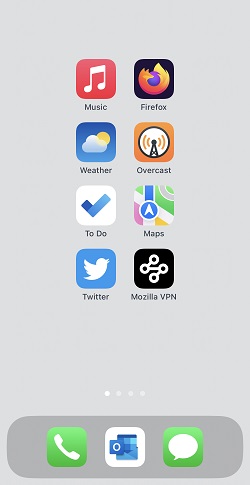Turn Your Smartphone Into a Dumb Phone
Smartphones, since the advent of the iPhone in 2007 [1], are ubiquitous, and for good reason. They’re capable, versatile, and an integral part of everyday life for many of us. But as we’re now swept up in the tsunami of notifications, social media updates, news alerts, and email threads, it can sometimes feel like our devices own us rather than the other way around.
As valuable as these features are, there’s a growing movement of people seeking to transform their smartphones into more manageable “dumb” phones, reminiscent of the Nokia days. Consider me part of this movement. This change isn’t about denying the smartphone’s potential but is instead an attempt to reclaim control and balance in our digital lives.
Here are some strategies I’ve deployed to turn my smartphone into a tool that both fits in my pocket and aligns with my needs, not a device that constantly pulls my attention.
Minimize Notifications⌗
The most significant, impactful step you can take is to reduce the barrage of notifications your phone throws at you. Every alert demands your attention, and it can be challenging to focus when your phone is perpetually buzzing.
Go to “Settings > Notifications” and methodically go through each app. If it isn’t essential, turn off its notifications. Keep only those necessary for your work, family, or vital reminders. Messages, phone calls, and calendar appointments often make the cut.
Limit Social Media Use⌗
Social media platforms are designed to be addictive. They’re a major distraction and a common time sink. If you feel like you’re spending too much time scrolling through feeds, it’s time to limit or eliminate these apps.
You can either delete social media apps altogether (don’t worry, you can still access them via a browser if necessary) or place usage restrictions. Go to “Settings > Screen Time > App Limits”, add the particular social media app, and set a daily limit according to your preference. The app will be grayed out once you’ve reached your allocated time.
Limit Email Checking⌗
Another modern-day stressor is the habit of constantly checking our emails. To regain control over your digital life, decide on specific time slots to check your email and stick to them.
To support this, disable automatic email fetching. You can do this by going to “Settings > Mail > Accounts > Fetch New Data” and turn off the “Push” feature. Set your email to manually fetch, or fetch at less frequent intervals. [2]
Reduce Home Screen Apps⌗
Out of sight, out of mind. Reducing the number of apps visible on your home screen can go a long way toward making your phone less distracting. Try to keep only essential apps on the home screen. [3]

On your iPhone, you can use the “App Library” feature to automatically sort your apps into folders away from your immediate view. Find it by swiping right on your last home screen.
Additionally, consider removing as many apps as possible and relying on websites instead. This is better from a privacy perspective as the amount of data collected via a web browser is significantly less than data that can be collected directly from a phone app. Might I suggest Firefox as your smartphone browser of choice?.
Use DND and Focus Modes⌗
The iPhone’s “Do Not Disturb” and “Focus” modes can be powerful tools for attention management. You can schedule “Do Not Disturb” for specific times or enable it when you need an undistracted period. The new “Focus” mode even lets you customize which alerts and apps are allowed to notify you during set periods or activities. You’ll find these under “Settings > Focus”. Using these modes and pushing important notifications to my Apple Watch, I rarely need to look at my phone throughout most of the day.
Use A Smaller Phone⌗
Switching to a smaller phone makes it less appealing to stare at the screen for long periods of time. In my case, I am using the iPhone 13 Mini, a recent upgrade from the 12 Mini. Before that, I was using whatever the “max” size iPhone was, starting with the iPhone 6 Plus, so the smaller screen of the Mini was jarring at first. Sadly, there does not seem to be a “mini” iPhone again in the future, so I’ll hold onto this one as long as possible.
Conclusion⌗
The idea behind converting your smartphone into a ‘dumb’ phone isn’t to throw technology back to the stone age but to promote a healthier, more mindful use of our devices. By minimizing distractions, we can transform our smartphones into the multi-tools they were originally intended to be, boosting productivity and overall digital wellness.
::::::::::::::::::::::::::::::::::::
[1] my first smartphone in 2005 was actually a Danger Hiptop, rebranded by T-mobile as the Sidekick II. After that I went through a series of very hackable phones before my wife and I made the jump to the iPhone 3G in 2008. Smartphones predate the iPhone, but our current understanding of the smartphone was kicked off by Apple in 2007, hence me using that date in this essay.
[2] I’ve found that only checking my personal email 2-3 times a day is most effective, and I use the end of the day to clear inboxes down “inbox zero”
[3] I used the iEmpty website to create “dummy” application icons to pad the space around my desktop icons.